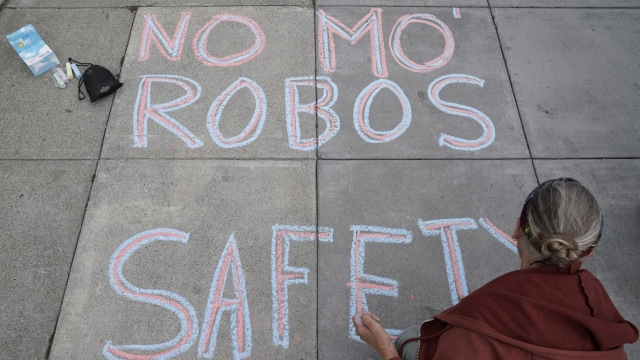California regulators on Thursday approved an expansion that will allow two rival robotaxi services to operate throughout San Francisco at all hours, despite safety worries spurred by recurring problems with unexpected stops and other erratic behavior that resulted in unmanned vehicles blocking traffic, including emergency vehicles.
The state's Public Utilities Commission voted to approve rival services from Cruise and Waymo to operate around-the-clock service. It will make San Francisco the first major U.S. city with two fleets of driverless vehicles competing for passengers against ride-hailing and taxi services dependent on humans to operate the cars.
It is a distinction that San Francisco officials didn't want, largely because of the headaches that Cruise and Waymo have been causing in the city while testing their robotaxis on a restricted basis during the past year.
But it ended in a major victory for Cruise — a subsidiary of General Motors — and Waymo — a spinoff from a secret project at Google — after spending years and billions of dollars honing a technology that they believe will revolutionize transportation. Both companies view approval of their San Francisco expansions as a major springboard to launching similar services in other congested cities that would benefit from a technology that they contend will be more reliable, convenient and cheaper than ride-hailing and taxi services reliant on human drivers.
SEE MORE: Are self driving cars safe?
During five-and-half hours of public comments at Thursday’s meeting, many speakers derided the robotaxis as annoying nuisances at best and dangerous menaces at worst. Others vented their frustration about San Francisco being transformed into a "tech playground" and the equivalent of an "ant farm" for haphazard experimentation.
Supporters of the robotaxis also stepped up to passionately defend the technology as a leap forward that will keep San Francisco on the cutting edge of technology, while helping more disabled people who are unable to drive to get around town and reducing the risks posed by drunk driving. One speaker predicted that unleashing the robotaxis would create a tourist attraction that could become as popular as rides on the fabled cable cars that have been navigating the city’s streets for 150 years. Waymo says there is so much interest in its robotaxis that it has already built up a waiting list of more than 100,000 people vying to take a driverless ride through the streets of San Francisco.
SEE MORE: What a record number of robots in the workplace means for jobs
The rising fears about the safety of the robotaxis had come into sharper focus during a preliminary hearing Monday that included a sobering appearance by San Francisco Fire Department Chief Jeanine Nicholson, who warned regulators that the robotaxis had been repeatedly undermining firefighters' ability to respond to emergencies.
"They are still not ready for prime time because of the way they have impacted our operations," Nicholson said during a four-hour hearing held Monday in advance of Thursday's pivotal vote.
To underscore her point, Nicholson cited 55 written reports of the robotaxis interfering with emergency responses. She said she is worried the problems will get worse if Cruise and Waymo are allowed to operate their services wherever and whenever they want in San Francisco — raising the risk of their disruptions resulting in injury, death or the loss of property that could have been saved.
The proposed San Francisco expansion has been facing increasingly staunch resistance, prompting regulators to postpone two previously scheduled votes on the issue in June and July. The Public Utilities Commission still decided to approve the expansion by a 3-1 vote.
Trending stories at Scrippsnews.com



